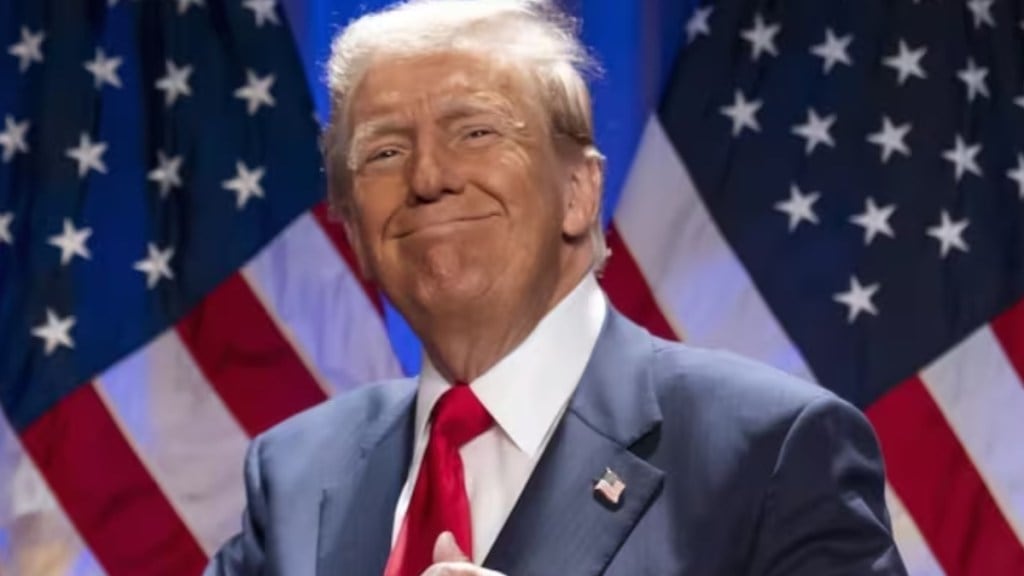By Amitendu Palit
It is difficult to gauge how much the onset of Trump 2.0 influenced India’s Union Budget. But a number of announcements in the Budget address bringing down cost of Indian exports and revising customs tariffs. These decisions would have been taken in the greater context of the developments impacting the world economy, one of the most significant of which is the beginning of Trump 2.0.
Trump 2.0 is barely a fortnight old and is yet to announce any decisions on tariffs or trade policy that will directly, or indirectly, impact India. But for some other US trade partners, tariffs are looming large. Indeed, according to the White House, Canada, Mexico, and China will be hit with tariffs of 25%, 25%, and 10% respectively, from February 1 itself.
There isn’t much surprise in the first round of tariffs being brought in by the Trump administration. These were widely expected from the statements made by Trump during his election campaign. China, Mexico, and Canada are not just the largest sources of imports for the US; they are also trade partners with whom the US runs the largest trade deficits. In fact, India’s trade surplus of $43 billion with the US is barely 10% of the surplus that China has with the US; it is a little more than one-third of the surplus that Mexico runs, and just under half of that of Canada’s.
Looked at from a deficit perspective, there are other countries that should be hit with tariffs before India, such as Japan, Germany, and Vietnam. However, while India might expect to be at the receiving end of tariffs sometime later down the line, the tariffs will come. This is evident from the “America First Trade Policy” announced on the day the President assumed office, that is January 20.
The “America First Trade Policy” makes it clear that trade policy is an important component of US national security, and aims to reduce the US’s dependence on other countries for key security needs. This means, from a US trade policy perspective, trade deficits, particularly large ones, remain unacceptable and non-negotiable. Since India does figure in the list of countries with whom the US has consistently run trade deficits and has often been called out by President Trump as a “high tariff” partner, it will be irrational not to expect tariffs on Indian exports to the US sooner or later.
Whenever they come, the tariffs impact prospects of Indian exports. The most obvious implication will be making them costlier for the US consumer. At a time when the Indian economy is expecting a relatively lower rate of growth in gross domestic product, the prospect of exports becoming costly to the US is not welcome. The possibility of Indian exports losing long-term market shares in their largest market cannot be ruled out.
This might have been one of the overriding motivations behind making exports a priority in the current Budget and declaring them as an engine of growth for powering the economy. While the Budget is not long-term trade policy, there are clear directions that are provided for trade policy, by making exports competitive in an overall sense. Sectoral support to key areas for enhancing exports, such as for footwear and leather, and fisheries, are noteworthy in this regard. But more important is the recognition that micro, small, and medium enterprises (MSMEs) — another identified engine of growth for the economy — are crucial in spearheading exports.
Equipping MSMEs for greater exports is a mutually reinforcing goal, as more exports from MSMEs will enlarge national exports and also increase the contribution of these enterprises to core macroeconomic fundamentals, such as jobs and industrial output. Credit guarantees for exporter MSMEs is a welcome step at a time when a rising dollar is creating difficulties for export invoicing. The costs for picking up expensive American dollars can be compounded by higher tariffs in the American market. It is therefore essential that exporter MSMEs be provided credit support.
It is good to note that the Budget acknowledges the important role that global capability centres (GCCs) are playing in enhancing services exports, and is working on creating a national framework for GCCs to ensure they don’t get clogged and congested in a handful of cities like Bengaluru, Pune, and Hyderabad. GCCs serve multiple purposes: they push India up the value chain in innovative high-end tech functions, garner large service export earnings, and create domestic jobs. Indeed, GCCs can be very supportive in filling gaps in export earnings arising from difficulties faced by goods exports.
The final area where the Budget has acted in anticipation of tackling rising costs that Indian exports might face is customs duties. The customs duty structure has been rationalised with a focus on reducing customs duties on intermediate inputs for increasing export competitiveness and facilitating entry with global supply chains. The legacy problem of carrying an inverted duty structure, where customs duties on inputs are higher than final products, has for long been an onerous burden for Indian exporters. The proposed changes are welcome from efficiency and competitiveness perspectives.
In the larger context of the global trade landscape becoming more complex due to imposition of tariffs by the Trump administration, bracing for shocks is the appropriate strategy. The Budget has made welcome moves in this regard by increasing the preparedness of Indian exports to face market access issues by trying to reduce production costs and increasing credit support. More such steps might be required if US tariffs come through.
The writer is Senior research fellow and research lead (trade and economics), Institute of South Asian Studies, National University of Singapore.
Disclaimer: Views expressed are personal and do not reflect the official position or policy of FinancialExpress.com. Reproducing this content without permission is prohibited.


